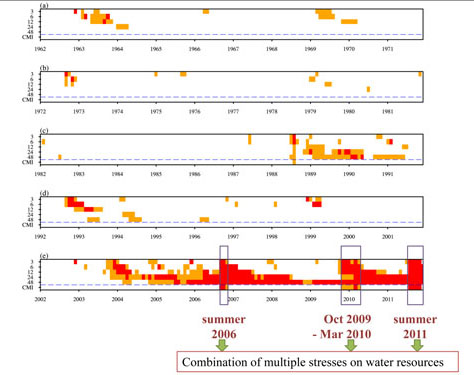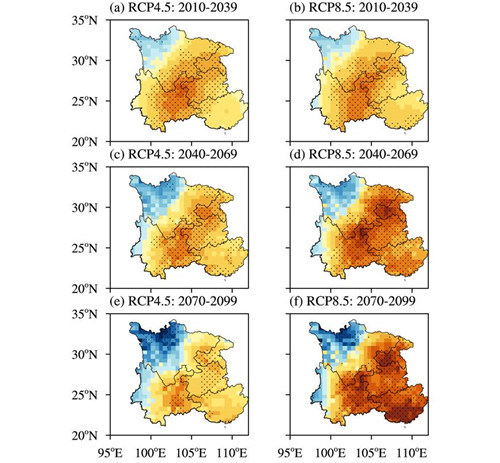The severe and sustained droughts in Southwest China (SWC) during the last decade results in tremendous losses including crop failure, lack of drinking water, ecosystem destruction, health problem and even deaths (Figure 1). Devastating droughts in SWC have attracted great concerns from both the Chinese government and the science community.

Figure 1 Drought in Southwest China
Dr. WANG Lin, Prof. CHEN Wen, and Prof. HUANG Gang from Institute of Atmospheric Physics and Associate Prof. ZHOU Wen from City University of Hong Kong, have carried out series of studies to reveal the essential feature and causes of SWC droughts in the past and possible tendency in future. They found that although SWC droughts are associated with deficient precipitation, the essential feature behind them is a combination of multiple stresses on water resources (Figure 2). Meanwhile, traditional drought indices as well as precipitation amount fails to recognize these causes, due to a lack of integrated treatment of drought. Hence, they propose a new drought metric, Comprehensive Multiscalar Indicator (CMI), to detect whether the severe droughts at multiple time scales occur alone or in concert.

Figure 2 Occurrence of severe (yellow) and extreme (red) droughts based on SPEI at the timescales of 3, 6, 12, 24, and 48 months (y-coordinate), along with that of S-type (yellow) and E-type (red) droughts based on CMI in the period of 1961 to 2011. Super droughts in summer 2006, autumn 2009 to spring 2010, summer 2011 are featured by a combination of multiple stresses on water resources. (Figure plotted by IAP)
Towards the end of 21st century, precipitation and evaporation are both expected to increase. In comparative terms, the increasing rate of evaporation outweighs that of precipitation, producing an overall drying tendency in SWC. Furthermore, they estimate that not only incidences of severe and extreme drought will increase dramatically in the future, but extremely wet events will also become more probable. It is also noteworthy that the future drought risk in SWC is nearly twice than other parts of China (Figure 3).

Figure 3 Spatial pattern of projected dryness-wetness changes from the reference period (1961-1990) to 2010-39 (Top row), 2040-69 (middle row) and 2070-99 (bottom row) under RCP4.5 (left column) and RCP8.5. Shaded brown indicates drying tendency, while blue denotes the opposite. (Figure plotted by IAP)
Their research results were published in several journals including Advances in Atmospheric Sciences, Climate Dynamics, Quarterly Journal of Royal Meteorological Society, and International Journal of Climatology. The research team also summarized and integrated the accumulated but fragmented findings in the understanding of multiple aspects of SWC drought, and highlight key issues and challenges to be addressed in future. The review was published in Atmospheric and Oceanic Science letters.
References
-
Wang Lin, Chen Wen, Zhou Wen, Huang Gang. 2015. Drought in Southwest China: A review. Atmos. Oceanic Sci. Lett., DOI: 10.3878/AOSL20150043, in press.
-
-
-
-
-
Contact: Dr. WANG Lin, wang_lin@mail.iap.ac.cn








